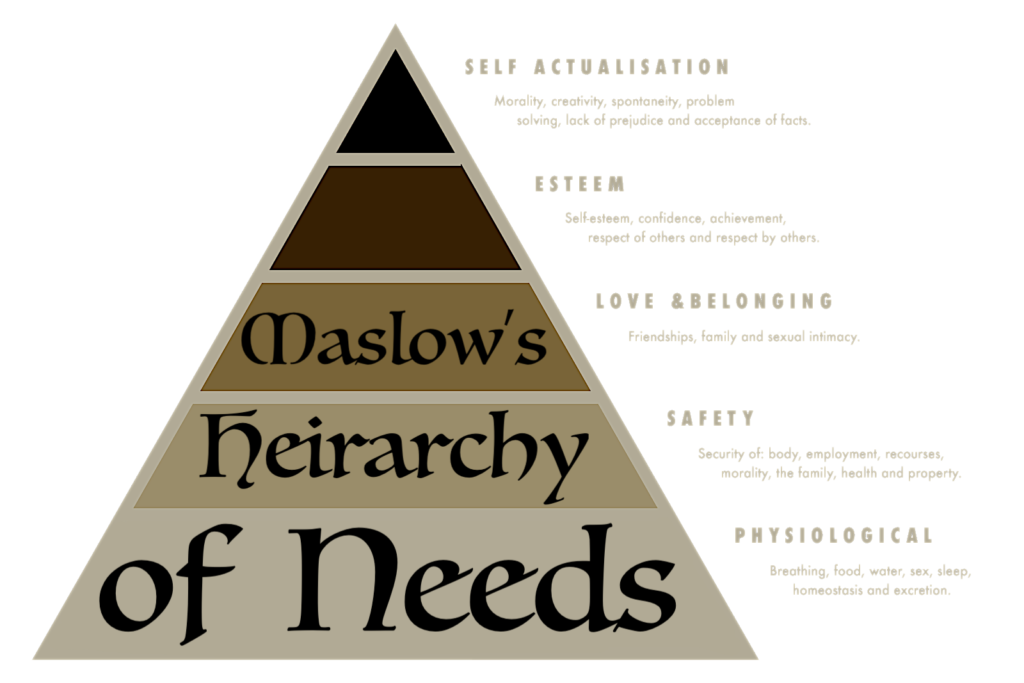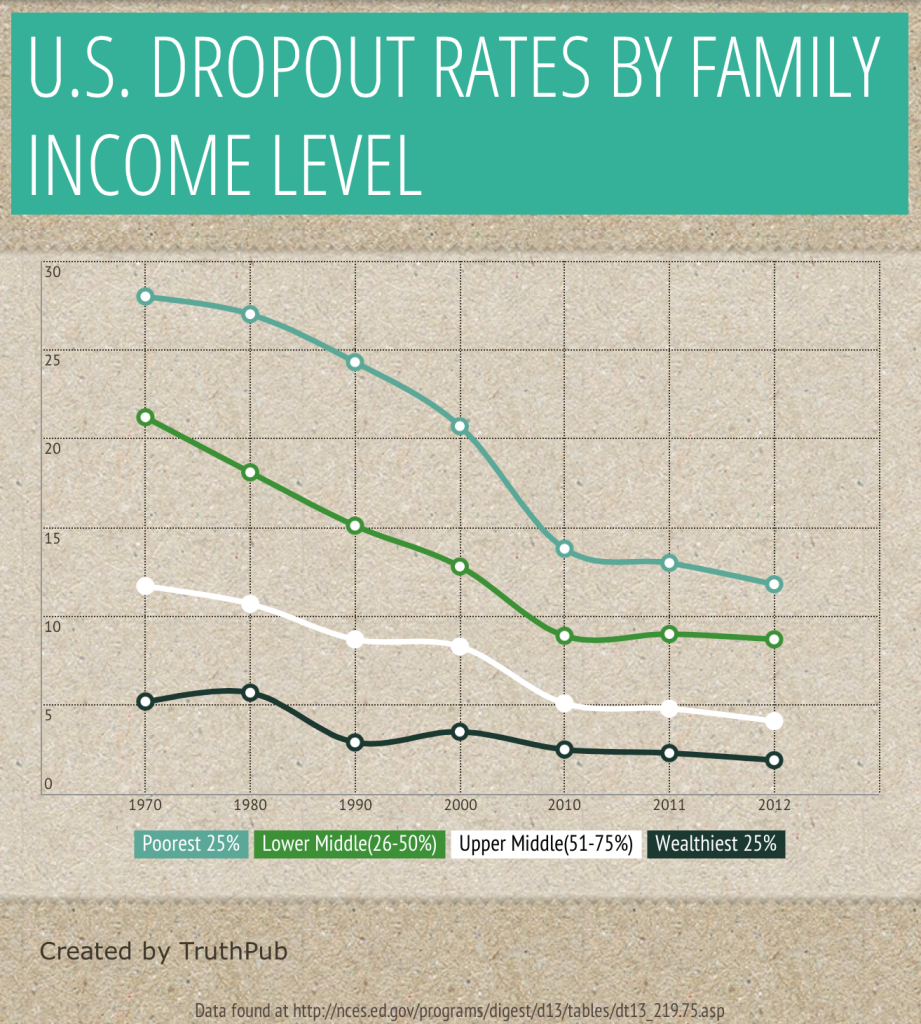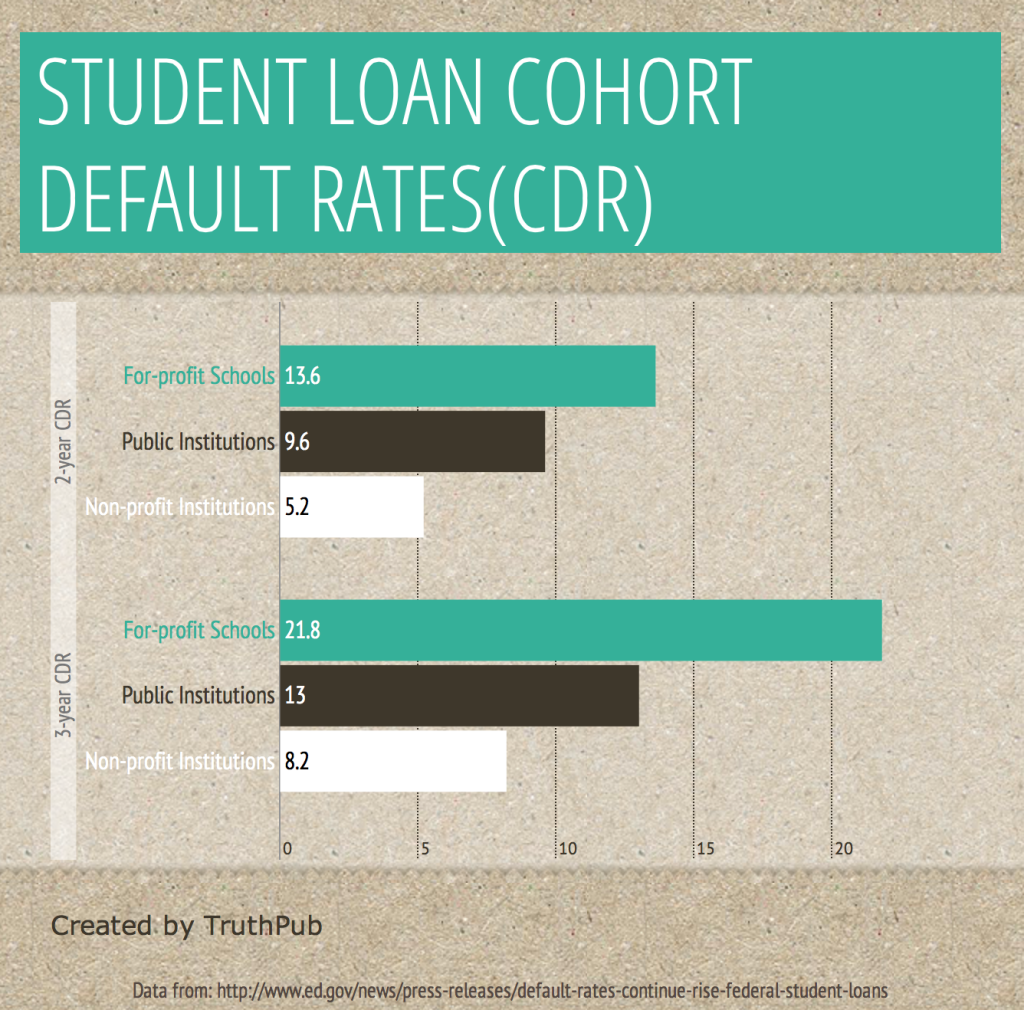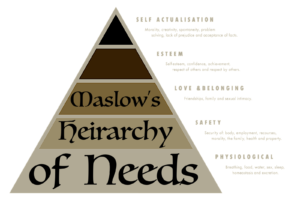
Abraham Maslow's Hierarchy of Needs
Today, the cost of education in the United States is at an all-time high. Many Americans have been priced out of higher learning. The corporate model has been entrenched into post-secondary education and spread rapidly. Colleges and universities are making significant amounts of money whether students graduate or not. American students are now $1.2 trillion in debt.
23% of American children live in poverty. Maslow’s Hierarchy of Needs states that if a person’s basic essentials are not met, the individual cannot progress. By using this principle, it may be concluded that people are not able to attain quality education if they lack the basic necessities of life.
During the 2011-2012 school year, the U.S. Department of Education showed that 1.8 million children were being homeschooled. This number is almost double what it was in 1999.
At the turn of the century, as the poverty rate increased, so did the amount of high school dropouts. Since the No Child Left Behind Act was signed in 2002, more students have graduated high school. This isn’t necessarily because a greater number of students learned more. Rather, the requirements have become easier to meet. The big losers in the NCLB scenario are by far the students, teachers, principals and school districts with politicians and unions making out.
Due to this, the wealthy have spent more money on their children’s schooling. This has widened the gap between them and the poor. 65% of Americans believe the gap has increased even more in the last 10 years. This has had the opposite effect of the presumed intent of NCLB. In almost every state in the union, the reading gap between the rich and poor has widened as well.
Many impoverished families simply can’t assist with their children’s education path. This is due to factors such as poor health, low literacy, and other social and financial issues. These are the same elements that Maslow’s Hierarchy deems to be crucial to advancement.
In 2011, 68.3% of high school graduates were enrolled in college. The same year, 48% of the country’s public school students qualified for either free or reduced-cost meals.
The good news is that financial aid to attend college has gone up. More students are also able to receive it. The bad news is that the cost of going to school has increased even more.
If poor students are able to obtain the necessary loans to attend college, a big portion of their lives is spent trying to pay them back. 71% of college graduates leave school with student loan debt. The lack of employment in many job markets is another determining factor in the ability to repay student loans. This causes many graduates to default, creating an even worse problem when they finish school.
Only 58% of students who attend college complete their degrees in six years. If they don’t graduate, they are still accountable for their debt. Dropouts still have to pay back their loans. Without a degree, their ability to find employment to do this is greatly diminished.
There are actions that can be taken to help the situation. Different teaching methods may be implemented to help level the playing field, regardless of economic class. Outside funding can be raised to assist underprivileged students meet their needs. Then they’ll be able to focus on learning instead of worrying where their next meal will come from.
The flipped classroom strategy is an approach in which students learn at their own pace. They can do this by watching video lectures at home. This leaves class time to actively work with the instructor. Then the student gets one on one time with the teacher instead of falling asleep during a long, boring sermon.
This method keeps students interested. It involves parents and helps students teach each other. It has been used with a variety of subjects in many environments from grade schools to universities.
The Kalamazoo Promise is a scholarship program that pays up to 100% of the tuition and fees for resident graduates of the public school system in Kalamazoo, Michigan. The Promise allows the students to attend four years at the state’s public universities and community colleges. The funding for this program has come from an anonymous source of donors.
There are a handful of other communities around the nation that have implemented similar “Promise” platforms. They help the individuals who receive the scholarships. They also drive the economies of the surrounding regions.
The Maslow Project is a nonprofit organization in Medford, Oregon. It provides outreach, advocacy and support to homeless children and their families throughout the county. Its mission it to give each homeless child the opportunity for a better life. The project does this by providing resources for basic needs, taking away barriers to education and work while nurturing self-reliance and empowerment.
The Maslow Project is run by the Medford School District. It received a national award for “outstanding school-based program providing services in homeless situations” because of its efforts in helping homeless students. Mary Farrell is the executive director of the project. She began the program in July 2007 and accepted the award on behalf of the organization only one year later. Its name comes from Abraham Maslow, who established the Hierarchy of Needs.
A free college education can be had in Germany. The nation has just abolished every tuition fee for all students, including Americans. This ban on college tuition went into effect this month.
Dorothee Stapelfeldt, a senator from Hamburg, says that tuition fees are unjust and discourage youth from taking up study. Even before this ban, German students were only paying approximately $630 per year for post-secondary education.
One request by German schools is that students who wish to partake in this endeavor learn the language. Instructions about how to participate can be found here.
There are definitely problems to overcome with regard to the education system in the United States. Using Maslow’s Hierarchy of Needs as a guide may be the best path to follow.







